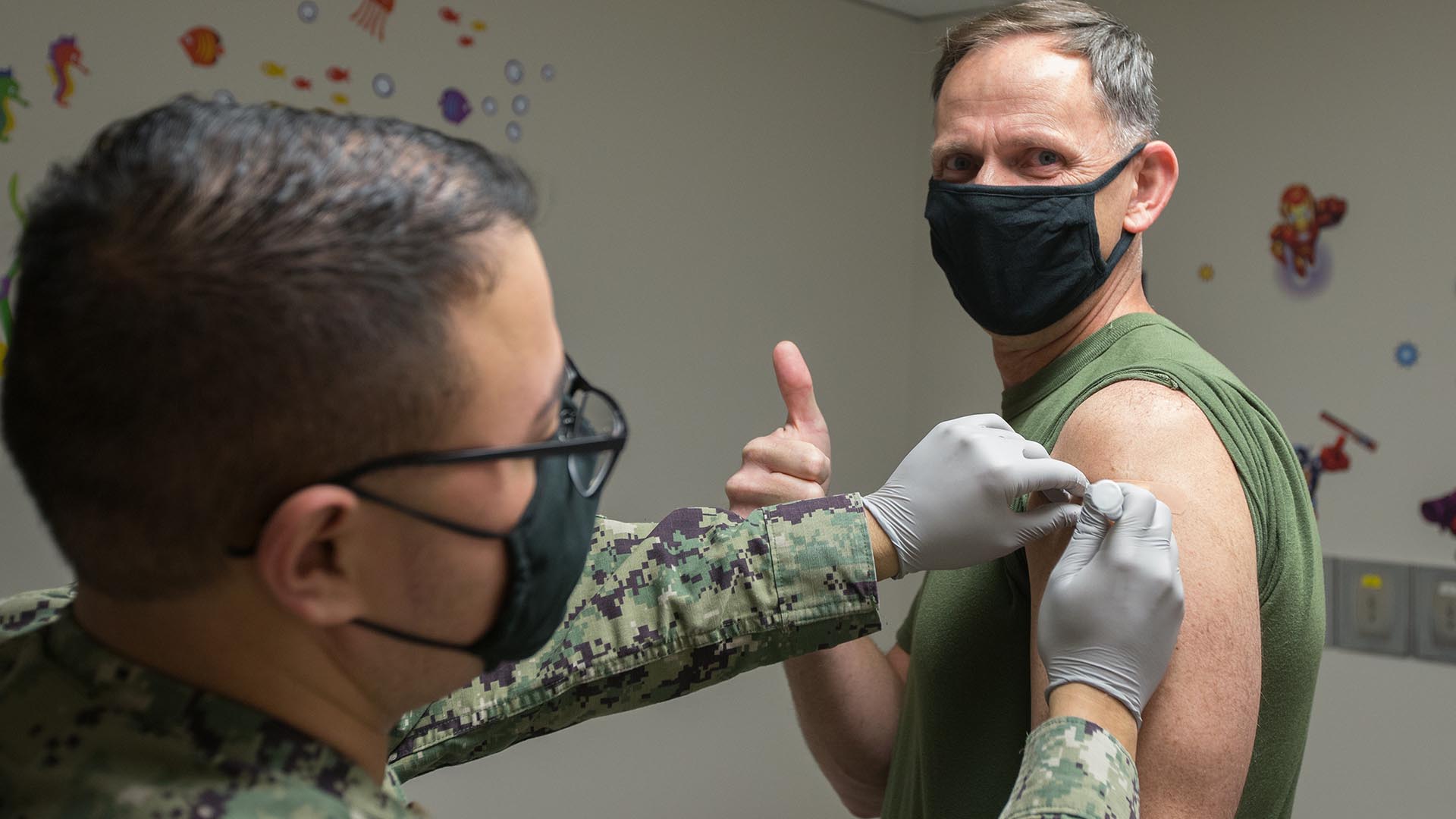

Remember the countless times someone from the Pentagon has claimed the military has absolutely no way to track how many troops are refusing to get vaccinated for the novel coronavirus?
Well, it turns out that roughly one third of service members have passed on the opportunity to get the COVID-19 vaccine, an Air Force two-star general told lawmakers on Wednesday.
“I think our initial look — and this, of course, is very early data — is acceptance rates are somewhere in the two-thirds territory, and of course it varies by different groups,” Maj. Gen. Jeff Taliaferro testified before the House Armed Services Committee.
Taliaferro, vice director of operations for the Joint Chiefs of Staff, is the first defense official to publicly acknowledge that the military knows how many troops are opting to not get a COVID-19 vaccine.
Until Wednesday, defense officials had insisted that it was impossible to find out how many service members were refusing to get vaccinated because the program is voluntary:
“It’s not the kind of thing that we’re centrally tracking here, that OSD [the office of the secretary of defense] has a database that we can just go pull from,” Pentagon spokesman John Kirby told reporters on Feb. 8. “That’s not the case right now.”
When Task & Purpose asked the Pentagon in January for data on service members who were refusing vaccine — noting that all troops must have up-to-date vaccination records — a Defense Department spokesman said the military had nothing to share.
“The number on declinations is not available at this time as this gets into the fact that taking the vaccine is on a volunteer basis and we adhere to the intent of the guidance that’s been put under the emergency use authorization,” Army Maj. César Santiago said on Jan. 29.
And when Task & Purpose asked Kirby if the Pentagon could use Defense Health Agency Form 207, which should indicate which service members have declined COVID-19 vaccines, to provide a sense of how many troops were refusing to get vaccinated, he said he’d look into it.
That was on Feb. 8 and the Defense Department has not yet responded.
On Wednesday Kirby continued to claim the Defense Department has no centralized system to track how many troops are deciding not go get a COVID-19 vaccine.
Kirby said that Taliaferro and other defense officials who testified on Wednesday were reiterating that the rate of troops refusing the vaccine mirrors trends in society as a whole.
He also insisted that the Pentagon is not making any attempt to hide data on the number of troops who are deciding not to get vaccinated.
“Nobody is hiding data,” Kirby said in response to a question from Task & Purpose. “There’d be no reason for us to hide data when we can certainly tell you how exactly many people are getting the vaccines. If there’s something more to what my understanding is of what was testified today, I promise you I will get it to you, but nobody is trying to hide anything here. It’s in our interest to be as open and as transparent as we can. We’re trying to do that.”
Kirby added that he took issue with the notion that the Pentagon was not being fully transparent with the media.
However, Sam LaGrone of USNI News has revealed that the Navy does have data on how many sailors are passing on the opportunity to get vaccinated. About 30% of sailors are refusing to get a COVID-19 vaccine.
When asked on Wednesday about the USNI story, Kirby said it is possible that individual commands or services have a better sense on who is refusing to get vaccinated than the Pentagon.
“At the Department of Defense, at the OSD [office of the secretary of defense] level, the level that we’re operating at, we don’t have a central tracking data mechanism to do that,” he said.
Former Pentagon spokesman Jonathan Hoffman said in December that the COVID-19 vaccine could become mandatory for service members and other personnel when the U.S. Food and Drug Administration fully licenses the vaccines.
But Rep. Mike Rogers (R-Ala.) noted on Wednesday that it can take up to two years to fully authorize a vaccine and he is concerned that the military does not have that long.
As of Wednesday, about 147,000 service members have received two doses of a COVID-19 vaccine, Robert Salesses, who is performing the duties of assistant defense secretary for homeland defense and global security, said at Wednesday’s hearing.
Featured image: A Marine receives the first dose of the Moderna vaccine during the DoD first phase level of vaccine administration at Navy Health Clinic Cherry Point, North Carolina, Dec. 23, 2020. (U.S. Marine Corps photo by Lance Cpl. Jacob Bertram)
